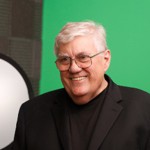3 things you may be doing wrong on LinkedIn

LinkedIn users often commit basic mistakes in how they use their LinkedIn profiles to market themselves and their skills. Here are three steps to get you moving in the right direction.
The simple act of being on LinkedIn is marketing, marketing yourself to the community where you live and work. It is the first place most go to vet those they meet or hear about.
LinkedIn has become an integral part of the government contracting ecosystem and it is not going away. Aside from face-to-face networking (for which LinkedIn is an adjunct activity) it is the best way to “meet and greet” others in our market.
As I write this I have 9,238 first degree connections, which may seem as though I connect without reason, but that would be inaccurate. I always connect with purpose; you have to be in GovCon.
There are over 2 million Feds on LinkedIn and I rarely fail to find the contractors that serve them.
All that being said, there are some common mistakes that many make when using LinkedIn, and I will share a few. I have a much longer list made through observation and by reading posts from other LinkedIn trainers and experts, so this is the tip of the iceberg, literally.
The first and most glaring is no picture or an inappropriate picture. Research shows that profiles without a photo of the member are more likely to be passed over. Many LinkedIn experts argue that the photo, or headshot, is the most important feature of a profile. I am inclined to agree, but it is only part of the puzzle.
Inappropriate photos include using actors, actresses and cartoons characters, photos in bars or at parties, and photos of boats and cars.
The standard photo should be you, in business or business casual attire, smiling, looking at the camera. Your head should be at least 50 percent of the photo.
The second mistake is not editing the headline (the line directly under your name). The default mode is your current job title, and most job titles don’t say two important things: what you bring to the table and the niche in the market you serve.
Nick Straiter of NetApp (he was at Brocade when I first met him), is a Federal Account Executive. This would show up under his name if he did not edit that space. Instead of FAE, Nick writes: “Empowering DOE/NASA customers to solve mission critical problems with world-class enterprise data management solutions.”
Nick explains what he does and who he does it for in his headline. This immediately tells the viewer if they should be reading more or moving on to the next profile.
The third mistake is omitting the summary or simply doing a resume cut and paste job.
The summary can be used in many ways, but if there is any “universal” way to start a summary, I would suggest starting it with a question, or a short series of questions. These should be written to determine if the profile viewer is a legitimate prospect, and to entice them to read more if they are a prospect.
I start my summary with these: “Ever ask yourself why your B2G marketing program has little or no results? Do you wonder if LinkedIn can generate more business for you? SMEs not getting attention? If you answer yes to any of the above, we should talk.”
My questions focus on three areas I specialize in: marketing to the government, LinkedIn and building a SME market position.
Supply chain logistics expert Dave Peterson starts his summary with these: “Do you need to improve the performance of your organization’s inventory investment? Are you looking for an impartial, thoroughgoing assessment of your firm’s service parts management practices? Would you like to deepen your team’s inventory management skillset?”
Dave’s questions focus the reader on supply chain inventory management, his area of expertise.
In both cases, if the questions are not germane to the viewer of the profile, they move on. If they are germane, the person viewing the profile is more likely to read more, and possibly reach out.
Earlier I wrote that this is literally the tip of the iceberg – here’s why: each of these is “above the fold” – all visible when you open someone’s profile: the headshot, the headline and the first few lines of the summary. Each of these is immediately visible when you click on the profile, no scrolling necessary.
A visit to your profile is often your “first impression” and it has to be good.
The simple act of being on LinkedIn is marketing, marketing yourself to the community where you live and work.
How are you seen when they come to your profile?
Mark Amtower has LinkedIn workshops coming up in March in Howard county and Tysons: http://blog.federaldirect.net/2018/09/linkedin-for-govcon-live-seminar.html
NEXT STORY: FCW adjusts Fed 100 nominations during shutdown
